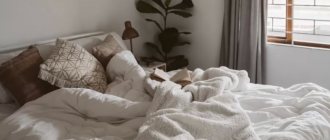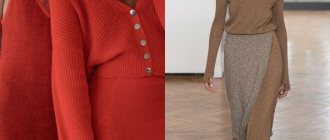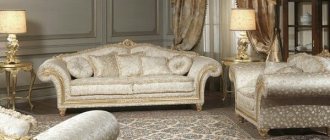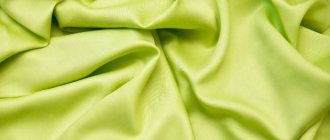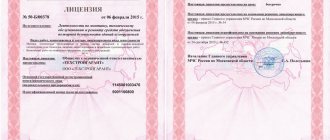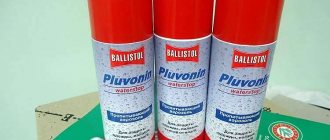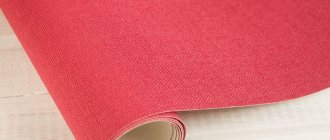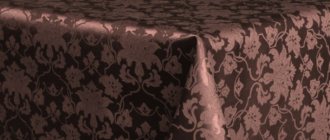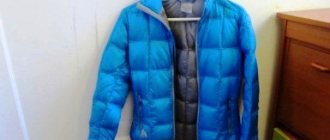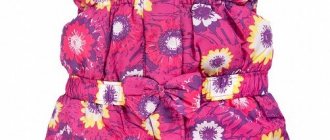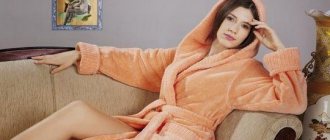Among modern synthetic materials there are many whose unique properties contribute to their use in a wide variety of areas of human activity. One such versatile material is Teflon, which is characterized by amazing durability and chemical neutrality. Teflon materials are widely used in technology, medicine, and everyday life. One common use for them is Teflon fabric, which is virtually impossible to tear or get dirty.
What is Teflon?
The name "Teflon" is a brand name for polymerized tetrafluoroethylene (PTFE) owned by DuPont. In our country, this substance was called “fluoroplastic”, which is still used in industrial production. The main features of this polymer are:
- resistance to temperatures in the range -70 – +270 degrees;
- lack of wetting with water, fats, organic solvents;
- inertness to the action of almost all chemical compounds, with the exception of fluorine, fluorine trichloride and alkali metal melts;
- "sliding" surface;
- electrical insulating properties;
- biological neutrality.
The list of possibilities for using Teflon in production and transport, in instrument making, and in the paint and varnish industry would be too long. It is successfully used as implants of various kinds, which dissolve after about a year and are replaced by restored body tissues. Kitchen utensils, razor blades, and various household appliances coated with Teflon are widely used. And, of course, everyone is well aware of the high-tech fabrics that use this polymer.
Types of Teflon fabrics
Depending on the thickness and method of applying the Teflon layer, textiles can acquire a wide variety of properties. This material is used wherever resistance to the external environment and high or low temperatures is needed, as well as high slip - in food, aviation, chemical and other industries. For the manufacture of clothing and household items, such well-known materials as cotton, viscose, synthetic fibers, as well as their mixtures are used, on which a thin Teflon film is applied, almost imperceptible even to the touch.
Anti-vandal fabric with Teflon coating is widely used for furniture upholstery, which looks very beautiful and does not require special care because it is resistant to:
- pollution;
- getting wet;
- cuts and scratches;
- abrasion;
- development of microflora.
To make such furniture look “like new,” it is enough to wipe it with a sponge and soapy water. The same applies to Teflon-coated tablecloths.
Another popular type of Teflon materials are membrane fabrics, for example, Gore-Tex.
To obtain them, a thin polymer layer with many micropores is applied to a textile base, which does not allow precipitation and gusts of wind to pass through from outside, but does not interfere with the removal of heated air and water vapor from the skin.
For such unique properties, membranes have earned the name “smart materials”, and the demand for them is constantly increasing.
,
Modern industry creates unique materials that have amazing properties. Today, these fabrics are widely used in households, mainly to protect furniture and preserve its original appearance. One of the most successful is Teflon fabric.
What is Teflon fabric?
Teflon coated fabric is actually a fabric that has undergone a special treatment. It can be cotton, silk, viscose and other synthetic materials. This aqueous Teflon impregnation for fabric, completely invisible to the human eye, allows you to create a very fine, but extremely effective protective layer around the fabric fibers. By the way, even if you touch the material that has undergone Teflon treatment, you will not find any difference with ordinary fabric.
Teflon impregnation prevents the fabric from absorbing moisture, repelling it. This fully applies to dirt and dust.
Where is Teflon fabric used?
The main area where so-called Teflon fabric is used is at home, public institutions or offices. Upholstered furniture is prone to getting dirty. And if your sofa or chair is upholstered with Teflon fabric, then spilled coffee, tea or juice will not harm it. The liquid simply flows off without leaving any traces. Teflon fabric for furniture reduces the effects of constant friction and also prevents the development of various microorganisms.
In addition, Teflon fabric is also used for sewing tablecloths, as well as curtains for bathrooms and showers. Even after food residue gets on the tablecloth, the textiles do not need to be washed or taken to the laundry. The tablecloth is simply carefully wiped with a sponge and set aside until the next feast.
Another area of application for Teflon fabric is as a cover. Teflon not only gets dirty a little, but also reflects heat, thereby improving the quality of ironing.
Sometimes fabrics cannot be used for their intended purpose without first using impregnation agents. This is usually necessary to impart water-repellent or fire-resistant properties to fabrics before clothing or other products are made from such material.
Impregnation is also used when processing furniture fabrics to make the material practical, less exposed to external influences and last longer.
There are different types of impregnations, which differ in purpose, cost and properties. The choice of impregnation means depends on the further use of the treated material.
Fabric impregnations are divided into three types according to their functions:
- waterproof;
- fireproof;
- biostable.
The third type prevents rotting and the proliferation of bacteria and is rarely used for fabrics (mainly for jute and semi-jute materials). Fireproof and water-repellent impregnations are more in demand.
Water-repellent impregnation
After treatment with such compounds, moisture and water do not penetrate through the fabric. Depending on the material and purpose of processing the fabric, one of the types of water-repellent impregnation is selected:
Impregnation type WR
The most popular type is WR type impregnation, which is applied only to the outside of the material. The treated fabric is not susceptible to getting wet, as drops of water roll down the protective layer.
Also, the fabric does not become damp at high humidity, since the impregnation layer does not allow even the smallest water molecules to pass through in the form of steam or fog.
Polyurethane impregnation (PU)
It is applied to the inside of the material, which may get wet from the outside, but the moisture will not seep through.
Impregnation DuPont
Teflon impregnation (DuPont) is an analogue of WR impregnation, but unlike it, it is applied to products that are used in more severe conditions. Teflon impregnation is most often used for impregnating furniture fabric, tents and outerwear.
Impregnation PD
PD impregnation is applied to the inner surface of the fabric and not only prevents the penetration of moisture, but also makes the material more durable. In clothing it is often used in combination with other types of impregnations.
Silver and Ultra Foil impregnations are also used for clothing. The first is applied to clothing from the outside and, in addition to water-repellent properties, has sun protection properties, preventing the material from fading. Ultra Foil is applied from the inside and forms a durable, shiny protective layer.
A separate item is silicone impregnation, which is applied to tents and is not used for clothing. This is due to the high cost of the product, the complexity of the application process and low efficiency compared to polyurethane analogues.
Impregnations for membrane fabrics
Despite the positioning of membrane fabrics as a material that is itself waterproof, sometimes it is additionally treated with DWR-type impregnations. This product protects the front side of the membrane from water penetration.
The principle of operation of membrane fabric is based on the fact that it absorbs moisture without letting it in. But the water accumulated inside the membranes prevents heat from escaping to the outside, so although such hydrophobic fabric is effective, a person quickly begins to sweat in clothes made of such material.
In addition, if moisture does not roll down the impregnation layer, but is absorbed into the fabric, the clothes become heavier. DWR is mainly used for processing clothing and accessories for tourists, as well as for some types of military uniforms.
Despite its water-repellent properties, DWR impregnation is water-soluble. Under normal conditions, the protective layer is damaged very slowly, but such items must be washed using special products that do not damage the protection.
Fire retardant impregnation
Fireproofing impregnation is used to treat workwear, but is sometimes used to treat tents (tourist and military). This impregnation does not guarantee complete protection against fire and burns: at high temperatures such a layer melts, but this can happen for different times depending on the composition of the impregnation.
The fabric itself also plays a big role. So, a tarpaulin, which itself is canvas impregnated with water-repellent and fire-resistant compounds, will not burn.
If you treat cotton or other knitted fabric with the strongest fire-retardant impregnation, sooner or later the protective layer will collapse and the material will begin to burn.
Teflon fabric, what is it, where and how is Teflon fabric used?
Teflon fabric is a material made from various types of glass fabrics with electrical insulating properties by sintering a certain number of layers of these glass fabrics using a fluoroplastic suspension - 4D.
The suspension is produced from fluoroplastic powder - 4D according to TU 6-05-1246-81.
In the USSR and Russia, the traditional technical name for this material is fluoroplastic.
The word "Teflon" is a registered trademark of DuPont Corporation.
Foreign analogues: TEFLON 30, FLUON AD, HOSTAFLON TF5000, POLYFLON D.
Teflon fabric , made using a fluoroplastic suspension - 4D, has excellent insulating properties, good heat resistance, increased strength, water resistance, is not susceptible to harmful substances, solvents, alkalis, organic acids, has a very low coefficient of friction, resists oil and many other types of contaminants , resistant to temperature changes,
The operating temperature range is 350 degrees - from -100 C to +250 C.
Teflon fabric is resistant to RF, ultraviolet and infrared radiation, retains its dimensions during operation, is non-toxic and harmless to people.
Currently, Teflon fabric is very widely used in many industries - in the aviation, medical, chemical, papermaking, packaging, paint and varnish, textile, food, clothing, glass, construction and woodworking industries.
It is also used
in apparatus engineering, mechanical engineering, electrical and instrument engineering, printing, mechanical, electronic, grinding, medical, dyeing and environmental protection equipment.
Teflon fabric is used as
- release fabric and tape in the production of blister packaging;
- separation tape for vacuum packaging machines;
- fabric for curtains of shrink chambers, etc.;
- Teflon fabric inserts are used in units and devices to reduce friction between various parts and surfaces;
- a narrow material made of Teflon fabric that can withstand heavy loads, exposure to acids and alkalis, and temperature changes is used as packaging tape;
- in the finished product, reinforced Teflon fabric resists
cyclic heating - cooling and allows you to get rid of curvature and thermal shrinkage of the product;
- as a substrate for baking confectionery and bakery products;
- as a material for the manufacture of workwear, protective equipment, protection from precipitation and wind, etc.
List all the ways to use Teflon fabrics - there are so many of them.
I wish you success! May the skill be with you!
Application area
Fire-resistant impregnations are mainly used to treat the workwear of firefighters, workers, metallurgists and representatives of other hazardous professions. But the scope of application of water-repellent agents is wider, and they are used for processing:
- protective clothing;
- jacket fabric;
- tents;
- backpacks and bags;
- belts;
- furniture;
- tablecloths;
- awnings and canopies for the street;
- raincoats.
Water impregnation not only retains moisture, but is also dirt-repellent. Most light and medium dirt is not a problem for such material, since dirt, consisting of large molecules, is not absorbed into the fibers and is easily cleaned off.
DIY water-repellent impregnation for fabric
All impregnations are applied during the production process or sold separately. But it is not profitable to buy impregnation separately, since they are mainly supplied in bulk, and if there is a need to treat clothes with such a composition, it is easier to prepare it yourself.
There are several impregnation recipes that you can make at home by purchasing inexpensive ingredients at a hardware store or pharmacy. For example, alum, used in medicine, is sold in pharmacies.
Here are several options for making your own impregnation:
- Take 500 grams of rosin powder, rubbed with shavings of laundry soap, acetone and laundry soda. Five liters of water are heated almost to a boil, after which soap shavings and soda are mixed in a container with water. Then rosin powder is dissolved in acetone, and the mixture is added to a common container, where everything is thoroughly mixed. The fabric is soaked in this solution for 12 hours. Instead of rosin powder, you can use coniferous tree resin.
- 500 grams of soap shavings are dissolved in five liters of warm water, after which the fabric is immersed there. While the material is being soaked, alum is dissolved in another container in five liters of water - a product already soaked in a soap solution is placed here.
- The product can be soaked for five days in a solution of copper sulfate (this substance is added in an amount of 300 grams per 12 liters of water). After this time, the fabric will acquire water-repellent properties.
If you need to make a reliable impregnation for a tent, it is better to soak the fabric in a solution for the preparation of which you use:
- alum (120 grams);
- quicklime (300 grams);
- 12.5 liters of water.
The solution does not need to be boiled, but must be mixed thoroughly. It is enough to withstand the fabric for 12 hours.
Most roller blinds cannot not only be washed, but even wet cleaned. But how to preserve the appearance of a product that is located in the kitchen, loggia, or in another room where the curtains can get very dirty?
For this purpose, there is a special impregnation that is used to treat fabrics for curtains. Teflon impregnation creates a dense transparent film on the surface of the material, protecting it from penetration of dirt and dust into the fibers and absorption of odors. In combination with water-repellent impregnation, Teflon helps to preserve the appearance of roller blinds for a long time, makes them easier to care for and extends their service life, because the structure of the fabric is not disturbed by any contamination.
By the way, Teflon-coated fabrics are actively used not only for the manufacture of roller blinds. They are used when sewing tablecloths for the kitchen, outdoor curtains, naperons, and are used when decorating rooms with high humidity and where there is a risk of exposure to precipitation (on open verandas, in summer cafes, gazebos).
Reading time: 9 minutes
High-quality textiles for table setting must meet several main criteria, namely, look aesthetically pleasing, be practical, and last a long time. A Teflon coated tablecloth meets these requirements. After all, the most exquisite and expensive linen tablecloths in terms of practicality can cause grief for the housewife. If you spill sauce, coffee, or wine on them, such an incident does not always pass without a trace. Not all, even the most expensive, detergents can restore the original appearance of a stained tablecloth.
Textiles made from synthetic fabrics are more protected from stubborn stains, but their appearance immediately reveals the price category of the product. Innovative technologies have made it possible to create a unique product - a Teflon-coated tablecloth, which is resistant to any contamination and is in no way inferior in style to the most famous products made from natural fabrics.
Teflon-coated tablecloths can be made from the same materials as regular kitchen textiles:
- linen;
- cotton;
- mixed fabric;
- synthetic fabric.
Care
A wet puddle on a tablecloth can be easily removed by blotting it with a napkin or sponge.
The fat should be washed with a foam sponge and soap, then wiped with a clean damp cloth or paper napkin.
Dried food residues and stains on the tablecloth must first be soaked with water or soap suds, and then collected with a wooden or plastic spatula and wiped with a sponge.
A Teflon tablecloth needs to be washed if a sponge and soap do not work . Repeated washing will lead to wear and loss of quality of the coating. It should be washed completely only if absolutely necessary. Machine washable, water temperature should not be higher than 40 degrees (often 30 is enough). It is better to use the delicate mode.
You can wash it by hand, do not rub or twist too much. Any washing powder can be used, at the discretion of the housewife.
But you can see what a tablecloth looks like on an oval kitchen table and what colors are available here.
On video, a tablecloth with Teflon coating:
Do not squeeze or twist the product. After all, creases form in the places of folds when squeezing and twisting, and the coating will be damaged there.
It is also worth learning more about what chiffon is and what kind of fabric it is.
Care depends on the composition of the fabric. Study the manufacturer's care recommendations and follow them!
You can see what round kitchen tablecloths look like and what sizes exist here.
After washing, shake off the tablecloth, straighten it, and allow the water to drain.
Dry flat, in natural conditions, preferably in the air, but keep away from direct sunlight. Do not dry near heating devices.
Iron from the wrong side, without pressing, with a not very hot iron.
Tablecloths with a base made of natural materials may shrink. Take this point into account when choosing, buy with a margin of length. For every day, it is better to buy a tablecloth made of synthetic fabrics.
Maybe
What is Teflon coating: how is it applied?
A Teflon-coated tablecloth is often called a “Teflon tablecloth,” and then owners are disappointed that Teflon is not some special fabric, but just a processing of the same cotton or synthetic fabric. This is impregnation with a special substance PTFE (polytetrafluoroethylene), discovered in 1938 in New Jersey, at the DuPont Jackson Laboratory.
Teflon coating is applied to the product at the end of the manufacturing process, or textiles are sewn from finished fabric that is subject to preliminary chemical treatment. Different manufacturers organize this process in their own way, but there are only two options.
The chemical PTFE is applied in the form of an aqueous solution. The method of application is dipping in plush, followed by fixing the preparation and drying the fabric. Only the fibers of the fabric are saturated evenly, all the “gaps” between the threads remain, that is, the fabric does not lose properties such as breathability. This is the difference between Teflon treatment before applying a continuous water-repellent film, which closes the “holes” between the threads and prevents air penetration.
What are the differences in the products?
Teflon tablecloths are essentially cuts of any fabric - linen, cotton, polyester, acrylic or polyester. Only a water-repellent chemical composition is applied to their surface.
Moreover, impregnation comes in different densities:
- with the presence of a base layer of Teflon, the fabric does not absorb oil and liquid;
- enhanced impregnation can retain moisture on the surface for a long time;
- double impregnation repels dirt.
You should also pay attention to how a transparent tablecloth looks on the kitchen table.
Teflon tablecloth: characteristics, advantages and disadvantages
Teflon-coated kitchen textiles have excellent consumer characteristics and a lot of advantages. It also has properties that can be considered disadvantages if you do not take them into account in everyday use.
It was noted above that a Teflon-coated tablecloth can be made from different fabrics, so it is suitable both for serving a festive table on the most special occasions, and for daily use on the kitchen table. It all depends on the choice of material and its color. Natural fabrics of pastel colors, with a complex patterned weave of threads, will help create a sophisticated atmosphere in the living room. Cotton fabrics with a “fun” print are suitable for the kitchen, as well as for setting the table for a picnic lunch.
The main advantages of Teflon impregnation of products for kitchen textiles:
- A Teflon-impregnated tablecloth has water-repellent properties. The fibers of such a tablecloth will not absorb spilled liquid, be it juice, coffee, tea, wine or other alcoholic drinks.
- Fat heels are also not terrible for tablecloths. Sauce, mayonnaise, vegetable oil, seasonings will not leave a mark on the tablecloth if you begin to remove them from its surface immediately after a spill or after a feast.
- A Teflon tablecloth is resistant to high temperatures. You can place hot dishes and frying pans on the table (it’s not advisable to use very hot ones) without worrying about hot mats - there will be no mark left on the tablecloth or the table surface.
- Cigarette ash will not burn a hole on such a tablecloth, even if it is made of synthetic or mixed fabric (fabrics without impregnation will be hopelessly damaged in such a case).
- The fabric of the tablecloth will not fade in the sun, even if used daily under its scorching rays.
- The tablecloth does not need to be ironed, it does not wrinkle, and retains its attractive appearance even after repeated use.
If you have an opinion about what a wonderful tablecloth this is, do not be disappointed when you learn that you cannot do without some nuances of use. You may consider them as disadvantages, but in any case, such a tablecloth has many more advantages.
Disadvantages of a Teflon-coated tablecloth
- First of all, this is the presence of a chemical compound on natural fabric. Here the user can choose either a completely natural fabric that gets dirty, or a fabric with an inert coating that is clean and attractive for many years.
- Features of tablecloth care, the need to follow the rules for care and cleaning.
- Limited service life of Teflon coating, approximately 5-6 years with regular use.
- Loss of durability of the Teflon coating after approximately 6 machine or chemical washes.
Description
Most housewives associate Teflon with the special coating of frying pans. Not long ago, fabric impregnated with it appeared. It is used for sewing workwear and upholstery. Home textiles are not left out either, because a tablecloth that will repel water, dirt and dust is the dream of any housewife. Liquid spilled on such matter is not absorbed into it, but remains on the surface as a puddle that can be easily blotted with a sponge.
Thanks to the Teflon coating, the attractive appearance of the tablecloth is preserved; the design, colors and shades do not wear out or fade.
Teflon improves the quality characteristics of the fabric from which the tablecloth is made.
But what types of tablecloths there are for restaurants and which ones are chosen most often are indicated in this article.
Advantages of Teflon coating:
- does not absorb fat;
- does not get wet;
- easy to care for.
Flaws:
- Low heat resistance. The integrity of the coating is destroyed at high temperatures. Do not place very hot dishes on the tablecloth.
- It does not tolerate the effects of abrasive particles well; it should not be scratched with sharp objects or a metal brush.
"Indications" for use
A Teflon-coated tablecloth can be selected for all occasions:
- on every day. There is a large selection of offers with calm, practical colors and dense Teflon impregnation. They are durable, wear-resistant, and can withstand repeated use.
- on holiday. Fabric with a festive design, such as white with decorative perforations, looks especially festive. And random stains on it will not ruin your mood, because they are very easy to remove.
- textiles for public catering places : canteens, cafes, restaurants. Serving them will always be neat.
- In summer, at the dacha , open terraces, balconies, practical canvases will be very appropriate. There will be no traces of wine, juice or fruit left on them.
You may also be interested in information about what a tablecloth looks like on a kitchen table.
How to choose a Teflon-coated tablecloth
This article was published on the website.
If you see this article on another site, it has been stolen. Considering the advantages and disadvantages of Teflon-coated kitchen textiles, many users decide that they should choose an expensive tablecloth from a reputable manufacturer, and the disadvantages will be avoided. But it is not so. The need to carefully and promptly clean the tablecloth and the abrasion of the coating due to frequent washing do not depend on the textile manufacturer. Depends on the manufacturer:
- choice of base fabric: fabric composition and its manufacturer;
- type of color and quality of fabric dyeing;
- the quality of coating application (if the coating is applied after sewing the tablecloth) or the choice of fabric manufacturer with ready-made Teflon impregnation for sewing kitchen textiles.
There are many manufacturers offering Teflon tablecloths at different price points. For example, inexpensive tablecloths that Russian consumers love:
- DiMi – Russia, Orenburg;
- Mogotex - Belarus;
- SEVEN - Poland;
- ARYA - Türkiye.
To create a stylish interior, expensive tablecloths made from high-quality natural jacquard fabrics impregnated with Teflon from the following manufacturers are ideal:
- FRIEDOLA DIAMOND – Germany;
- BLUMARINE – Italy;
- ENSOLEILLADE - France.
Most manufacturers from Turkey or Taiwan offer both inexpensive products for everyday use and festive kitchen textiles.
In addition to individual tablecloths, you can order sets that include table napkins in quantities of 6, 8 or 12 pieces.
